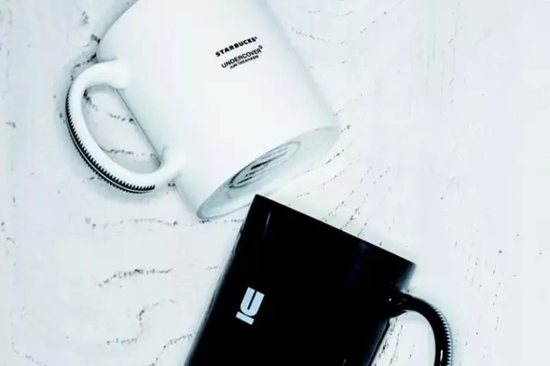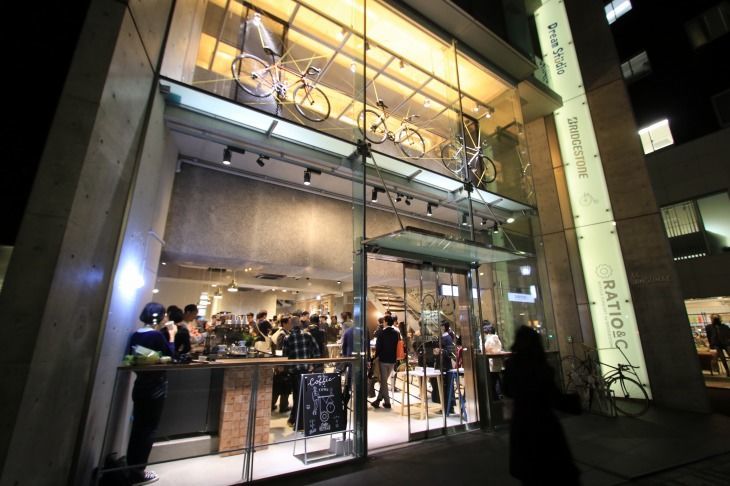New York is in fashion: coffee shops open to barbershops, a new "mix" experience
Editor's note: a small idea to bring the crumbling old barbershop back to life--cafe-barbeshop--combines barbershop and coffee shop functions to "make haircuts feel like an experience, not an obligation." Does this "mix" give you any inspiration?
Cafe-barbeshop, which doubles as a barber shop and coffee shop, is becoming popular in Brooklyn, New York.
Blind Barber on Williamsburg Street in Brooklyn offers a $45 haircut and more than a dozen drinks, including four beers and cappuccino made with Blue Bottle coffee. After ordering, sit in one of four old-fashioned salon chairs and wait for a haircut.
According to the New York Times, Jeff Laub, co-founder of Blind Barber, said: "It's not important to make $3 per cup of coffee. What's important is to start a conversation, develop a friendship, etc. with it."
Every few weeks Andrew Livingston, 22, co-founder of Brooklyn Men's Wear, stops by Blind Barber on his way home for a pale ale or espresso, where he often finds like-minded people. "It's a great place to relax," he said."It's important for people, especially New Yorkers, to have an environment where you can decompress, relax and talk."
Blind Barber co-founder, left: Adam Kirsch, right: Jeff Laub
Before cafe-barbeshop became popular, the outlook for old-fashioned barbershops was bleak. Barbershops entered the Great Depression in the mid-1960s, and thousands went bankrupt. Many books from the 1990s have mentioned that they are at the end of their tether.
Allan Peterkin, professor of psychiatry at the University of Toronto, said: "Barber shops are relevant to the postwar generation (both World War I and World War II) because their hair is short. While hippies were in vogue in the '60s, moustaches were in vogue in the' 70s, and more and more gender-neutral barbershops appeared in the '70s and' 80s. And, as men's hairstyles get more complicated, they feel the barber shop can't do it. But nowadays, many men go back to short hair, even if they have bushy beards, and barbers are the best at that."
Stylish men find the ambience of a versatile barber shop more attractive than that of a modest neighborhood barbershop. Emma McKay, executive editor of AskMen, a men's website, said: "These combined products are like community centres. In the modern world, there is no space for men only, and the barber shop is still men first."
Carlos Garcia, 32, a restaurant management consultant, used to frequent the barber shop near his apartment, but he found the experience at Cotter Barber more interesting. There, he holds an Americano and relaxes in the backyard of the store on a good day."It's a long wait, but I'm happy to go in and have a cup of coffee I like," he says.
Jon Wilde, editor of GQ magazine, who lives in Brooklyn, says cafe-barbeshop "makes it feel like an experience, not an obligation…It's a little expensive, but drink your favorite beer and let them take care of your hair."
Persons of Interest, a barber shop on Williamsburg Street, teamed up with Parlor Coffee to serve Italian espresso drinks to customers. "It's obviously the same customers who have the best haircuts and drink the best coffee," said Steve Marks, the owner. And Dillon Edwards, founder of Parlor Coffee, said: "People who pay $45 for a haircut will pay $5 for a cup of coffee."
Despite the surrounding cafes and hairdressing salons, cafe-barbeshop continues to spring up, all with cafe or liquor licenses:
In March, Cotter Barber opened in Greenpoint, Brooklyn, complete with a La Marzocco manual espresso machine placed in front of a counter made of recycled wood and four vintage barber chairs behind the counter (although gender is not limited, most customers are male).
Fellow Barber on Williamsburg Street also launched coffee service in February. All coffee-barbeshop beans come from artisanal roasters. Fellow Barber plans to add a bar to its Detroit store.
And it's not just Brooklyn that's springing up a number of multi-purpose drink shops: Toronto's Rod,Gun & Barbers has an in-house bar that allows smoking. San Francisco's Peoples Barber & Shop and Philadelphia's Duke Barber Co. both serve cold beer, while Portland's salon chain The Modern Man offers beers and bourbon from local suppliers.
Source: Understanding LVENT
Important Notice :
前街咖啡 FrontStreet Coffee has moved to new addredd:
FrontStreet Coffee Address: 315,Donghua East Road,GuangZhou
Tel:020 38364473
- Prev

Coffee Fashion Information: Starbucks STARBUCKS x UNDERCOVER mug released
UNDERCOVER's special project was reported on the cover of the latest issue of PRODISM magazine on November 24th. This time, UNDERCOVER in charge of Takahashi Shield cooperated with STARBUCKS to create two exclusive mugs for "PRODISM". UN was reported on the cover of the latest issue of PRODISM magazine on November 24th of the STARBUCKS x UNDERCOVER mug.
- Next

A must-visit place in Tokyo, Japan: both bicycles and coffee
We have reported a lot about all kinds of innovative bikes, and there are several Dead Flying shops, but this new bike shop in Tokyo is very interesting. The RATIOC concept store, located in Shibuya, Tokyo, in front of the Meiji Shrine, wants to attract some bicycle enthusiasts and coffee lovers, adding a coffee bar on one side of the two-story store that uses various bicycle elements. At first, this store
Related
- What brand of black coffee is the most authentic and delicious? what are the characteristics of the flavor of the authentic Rose Summer Black Coffee?
- Introduction to the principle and characteristics of the correct use of mocha pot A detailed course of mocha pot brewing coffee is described in five steps.
- Which is better, decaf or regular coffee? how is decaf made?
- How much is a bag of four cat coffee?
- How about four Cat Coffee or Nestle Coffee? why is it a cheap scam?
- Which is better, Yunnan four Cats Coffee or Nestle Coffee? How about cat coffee? is it a fake scam? why is it so cheap?
- How about Cat Coffee? what grade is a hoax? which instant coffee tastes better, four Cat Coffee, Nestle Coffee or G7 coffee?
- Process flow chart of coffee making-Starbucks coffee making process what coffee tastes good at Starbucks
- The top ten best coffee beans in the world Rose summer coffee or Tanzanian coffee tastes good
- Yunnan four cat coffee is good to drink?_four cat coffee is a big brand? four cat blue mountain coffee is fake?

